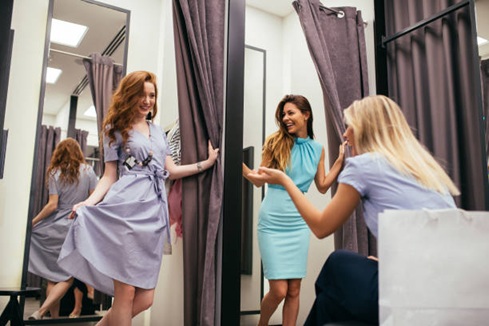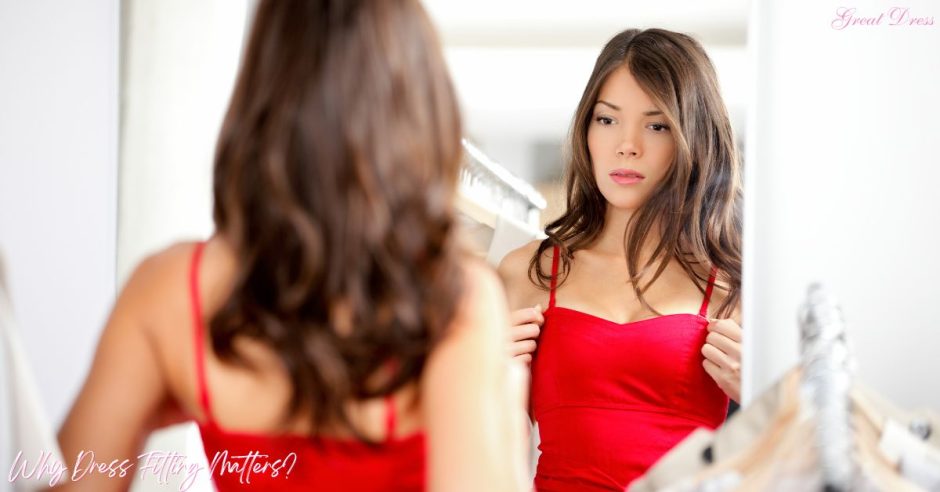Trying on clothes might seem simple, but it’s a game-changer for achieving the perfect look. Dress fitting matters because it does more than just flatter your body—it enhances your confidence, accentuates your best features, and helps you feel empowered. Yet, many people skip the fitting process, assuming their regular size will work. This often leads to disappointment when the dress doesn’t look as expected or requires costly alterations.
With fashion trends constantly evolving and body shapes differing from one person to another, dress fitting should be a non-negotiable step in your shopping routine. Whether you’re updating your wardrobe, attending a special event, or simply looking for a confidence boost, understanding the significance of a perfect fit can transform your shopping experience and elevate your style. Let’s explore why dress fitting matters and how it can unlock your best look.
Why Dress Fitting Matters and Should Be a Priority
There’s nothing worse than falling in love with a dress online or on a store rack, only to find that it doesn’t fit quite right. The excitement fades, and frustration kicks in. By trying it on first, you save time, money, and the hassle of returns or alterations.
Fitting rooms are your best friend when making decisions about clothing. This simple step allows you to assess:
- The Fit – Does the dress hug your body in all the right places? Is it too tight or too loose?
Comfort Level – A dress may look stunning on a mannequin but feel restrictive in real life.
Functionality – Can you move freely? Can you sit down without the fabric pulling uncomfortably?
What’s new in 2025?
With the rise of AI-powered virtual fitting rooms and 3D body scanning technology, many brands now allow customers to visualize how a dress will fit before even trying it on. However, while these tools can be helpful, they still don’t replace the accuracy of physically trying on a dress.
Moreover, physically fitting a dress first can reveal subtle details that might go unnoticed at a glance. Sometimes a dress looks fantastic on the hanger but fails to deliver the same magic when worn. By slipping into it, you can gauge whether the dress flatters your shape and fits the way you envision.

Key Factors to Consider During Dress Fitting
The perfect dress isn’t just about the right size—it’s about the right combination of fit, fabric, style, and occasion. Here’s what you should focus on:
1. Color and Its Psychological Impact
Color is a powerful tool in fashion. It can affect how you feel, how others perceive you, and even influence your confidence.
- Dark colors (black, navy, deep green, maroon) – Create a slimming effect, making them a popular choice for formal events and business settings.
- Light colors (white, beige, pastels) – Give off a fresh and airy look, often associated with softness and elegance.
- Bold colors (red, royal blue, emerald green, mustard yellow) – Exude confidence and make a statement, perfect for events where you want to stand out.
Trend Alert: In 2025, Earthy neutrals and dopamine dressing (wearing bright, happy colors that boost mood) are taking over fashion. Choose colors that resonate with your personality and energy.
2. Fabric and Texture – The Feel Matters
Different fabrics impact how a dress fits and moves with your body. Always test how a fabric reacts to your movements before making a decision.
- Stretchy fabrics (spandex blends, jersey, knitwear): Provide flexibility and contour to the body, making them great for everyday wear.
- Structured fabrics (linen, organza, wool blends): Offer a more defined silhouette but may feel restrictive if not fitted properly.
- Breathable fabrics (cotton, silk, chiffon): Ideal for summer and warmer climates as they keep you cool and comfortable.
Quick Tip: If a fabric wrinkles easily in the fitting room, it’s a sign that it may require high maintenance.
3. Occasion and Setting – Dressing for the Right Moment
Not every dress works for every occasion. A dazzling, sequin-covered dress might be perfect for a cocktail party but overwhelming for a casual brunch. When fitting a dress, consider:
- Formal occasions (weddings, galas, corporate events): Opt for structured fits with elegant details.
- Casual settings (brunch, shopping, day outings): Flowy, comfortable dresses work best.
- Workwear (meetings, office wear): A well-tailored fit with neutral or deep colors gives a professional edge.
4. Seasonal and Trend Considerations
Fashion trends shift with the seasons. While a bodycon dress may be ideal for summer, it might not be practical for winter layering. In 2024, oversized yet tailored dresses are gaining traction, blending comfort with sophistication. Always try on a dress with the season in mind.
The Power of Mirrors and Honest Reflection
Mirrors are your best reality check in the fitting room. Here’s how to maximize their use:
- Move around – Walk, sit, and stretch to see how the dress behaves in real life.
- Check for gaps and bulges – If there’s extra fabric around the waist or an awkward bulge near the zipper, it may not be the right fit.
- Assess the hemline – Too short? Too long? The right length should complement your height and proportions.
Pro Tip: If the store has a three-way mirror, always use it to check the back view—you don’t want surprises later!
Designer vs. Generic Dresses – Does Fitting Still Matter?
Whether you’re buying a luxury designer dress or a fast-fashion alternative, fitting is always crucial.
- Designer dresses – Typically crafted with superior materials and better tailoring, but they still vary in size and cut.
- Generic brands – Often mass-produced, meaning sizing can be inconsistent.
Lesson? Always try before you buy—regardless of the brand.
The Confidence Factor – Why Fit Equals Power
A well-fitted dress isn’t just about looking good—it’s about feeling good. When your dress fits perfectly, you naturally:
✨ Stand taller and exude confidence
✨ Move more comfortably and gracefully
✨ Eliminate the constant need to adjust or fidget with your clothing
Psychology of Fit: Studies suggest that when people wear clothes that fit well and make them feel attractive, their mood, posture, and even social interactions improve. That’s the power of fashion psychology!
Tips for Dress Fitting Success
- Take Your Time – Rushing leads to bad decisions. Try on multiple styles and cuts.
- Experiment with Sizes – Different brands = different sizing charts. Don’t stick to one number.
- Bring the Right Accessories – Try dresses with the shoes or undergarments you’ll actually wear.
- Seek a Second Opinion – A friend or store assistant might notice things you didn’t.
- Focus on the Fit, Not the Label – Size tags can be misleading. Fit is what truly matters.
The Emotional Connection – When a Dress Feels “Right”
Some dresses hold sentimental value—the one you wore on a first date, a milestone celebration, or a memorable vacation. The emotional bond we have with clothes is real. That’s why finding the perfect dress isn’t just about fashion—it’s about creating memories.
If a dress makes you feel confident, radiant, and comfortable, it’s the right one. Listen to that feeling.
Conclusion
Fitting your dress first is an essential step to looking and feeling your best. It helps you avoid poor purchases, enhances your confidence, and ensures that your wardrobe works for you, not against you.
Next time you go shopping, don’t just grab and go—pause, fit, and fall in love with a dress that makes you shine. Because the right fit isn’t just about fashion—it’s about self-expression, confidence, and empowerment.

